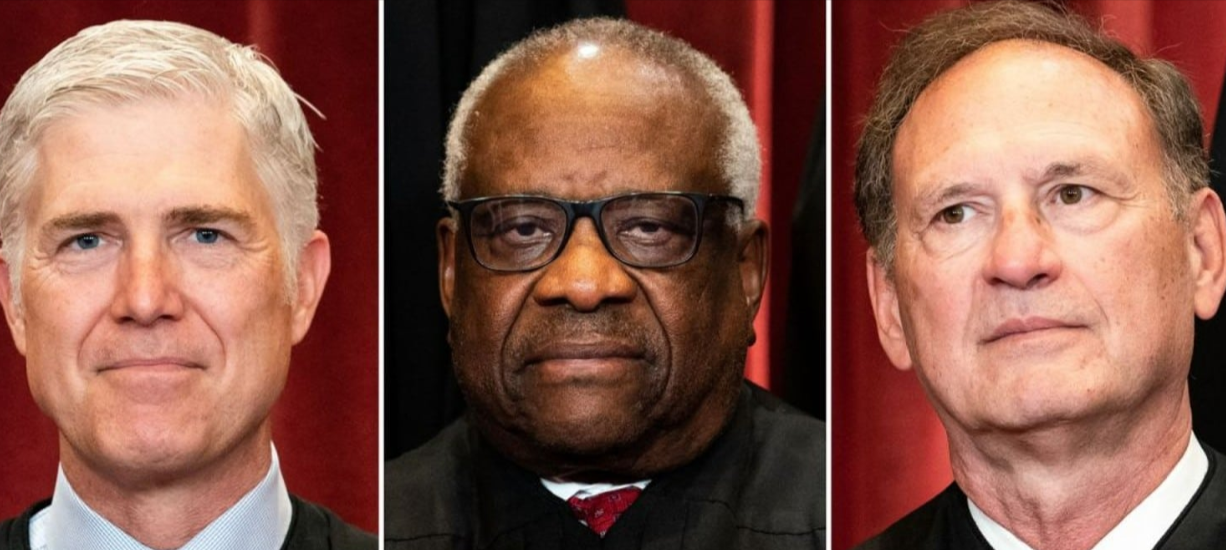Conservative Supreme Court Justice Responds to Calls to Retire

U.S. Supreme Court Justice Samuel Alito has made it clear he has no intention of leaving the nation’s highest court.
“Despite what some people may think, this is a man who has never thought about this job from a political perspective,” a source close to Alito explained. “The idea that he’s going to retire for political considerations is not consistent with who he is.”
Insiders speaking with The Wall Street Journal downplayed speculation that the 74-year-old justice might retire, allowing President-elect Donald Trump to replace him with a younger conservative.
The three oldest members of the Supreme Court are currently in their 70s, and Trump’s recent election has stirred new debates over the future makeup of the court.
With Republicans anticipated to control both the Senate and the presidency by January, they’ll be positioned to fill any Supreme Court vacancies without needing Democratic approval for at least two years.
Some conservatives argue that it would be prudent for Alito, appointed by President George W. Bush in 2006, and Justice Clarence Thomas, 76, appointed by President George H.W. Bush in 1991, to step aside, creating openings for younger conservative justices who could sustain a conservative majority on the court for decades.
Public opinion polls indicate that many Americans view the Supreme Court as politically influenced. However, insiders note that justices across the ideological spectrum strive to remain above partisan politics, finding Washington’s postelection chatter increasingly intrusive.
With three Supreme Court appointments in his first term, Trump solidified a conservative 6-3 majority on the court.
Alito has been instrumental in advancing conservatism on the bench. He authored the landmark opinion in 2022 overturning Roe v. Wade, the 1973 ruling that had established abortion rights before fetal viability, achieving a goal long sought by many conservatives.
Those close to Alito say he is in good health, enjoys his role, and believes he has more to contribute to the court's jurisprudence.
Alito has already hired a law clerk for the 2025–2026 term and plans to fill his four-clerk roster in the coming months, signaling his commitment to stay on the bench.
Exclusive: Justice Samuel Alito has no plans to step down from the Supreme Court, tamping down speculation that the 74-year old jurist was readying to retire 🔗 https://t.co/JpWQSi8lZH pic.twitter.com/Ko6EkfgyDM
— The Wall Street Journal (@WSJ) November 12, 2024
With justices appointed for life, any vacancy could shift the balance of the court for a generation, something both Democrats and Republicans are keenly aware of. Neither side wants the makeup of the court to be influenced by the unpredictable outcomes of elections or the health of sitting justices.
The passing of Justice Ruth Bader Ginsburg in September 2020, which enabled Trump to appoint Justice Amy Coney Barrett in the final months of his first term, remains a critical moment in discussions surrounding court vacancies.
In the early 2010s, when liberals urged Ginsburg to retire to allow President Barack Obama, backed by a Democratic Senate majority, to nominate her successor, she chose to stay. She passed away at 87, enabling a conservative shift with her replacement.
Some Democrats now have similar concerns about Justice Sonia Sotomayor, the most senior member of the court’s liberal minority at 70. Some progressives argue she should step down, allowing Senate Democrats and President Biden to appoint a younger liberal justice.
However, Sotomayor’s allies recently informed The Wall Street Journal that she is in good health and has no intention of resigning just because Republicans may soon dominate Supreme Court nominations. Instead, they emphasize that she feels her role on the court remains meaningful, even if it involves dissenting.